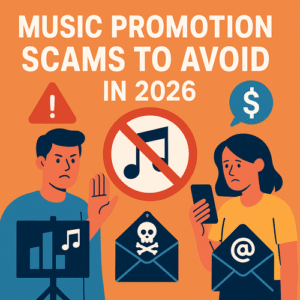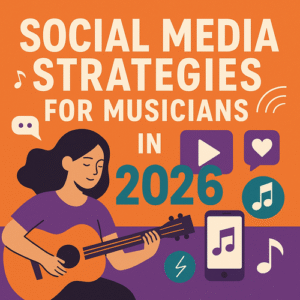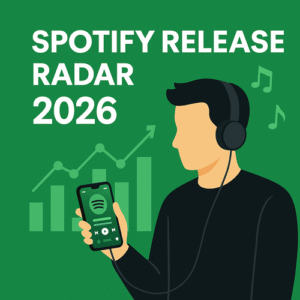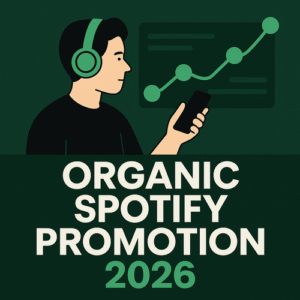In 2026, playlists continue to be one of the most powerful tools for music discovery. Whether you’re an independent artist releasing your first single or an established musician looking to expand your audience, getting placed on the right playlists can be a game-changer.
But the landscape of playlist pitching has changed dramatically. Gone are the days when you could send hundreds of cold emails or rely on random submission links. The most effective playlist pitching strategies in 2026 combine authenticity, data, and long-term relationship building.
This guide reveals exactly what works — and what doesn’t — for artists who want to grow through playlist placements this year.
The Evolution of Playlist Pitching
A few years ago, most artists focused on editorial playlists like Spotify’s “New Music Friday.” While these lists still hold major influence, the competition is now tougher than ever. Instead, smart artists are turning to independent curators — individuals and brands who manage playlists with loyal followings and niche audiences.
These independent lists often deliver better engagement than large editorial playlists because the listeners are truly interested in the genre. For 2026, success means finding curators who genuinely love your sound, not just chasing follower counts.
1. Research Before You Pitch
Before sending a single message, study each playlist carefully. Ask yourself:
- Does my song fit the genre and mood?
- Are the existing artists similar to my sound?
- How active is the curator (how often is the playlist updated)?
Tools like Chartmetric, PlaylistSupply, and Viberate make it easier to analyze playlists, track engagement, and find curators whose followers align with your audience. The key is quality over quantity — it’s better to pitch to ten perfect fits than a hundred random lists.
2. Build a Personal Connection
The most overlooked element of playlist pitching is relationship building. Curators receive dozens of submissions daily, and most are generic copy-paste emails.
Stand out by being personal and respectful. Follow the curator’s playlist, engage with their posts on social media, and listen to their previous picks. When you do reach out, mention something specific about their list or taste.
For example:
“Hey [Name], I’ve been listening to your ‘Indie Chill Nights’ playlist for a while — love how you blend mellow guitar tracks with ambient beats. I just released a song that fits that vibe perfectly; would love to share it with you.”
This kind of genuine outreach shows that you respect the curator’s work — and that makes all the difference.
3. Perfect Your Pitch Message
A great pitch should be short, clear, and respectful. Here’s a proven structure:
- Introduction – Who you are and what your music is about
- Reason for Contact – Why your track fits their playlist
- Song Details – Title, genre, release date, and Spotify link
- Closing – Gratitude and no pressure
Avoid spammy language like “please add me” or “this song will blow up.” Keep it professional and humble. Curators appreciate artists who are serious about their craft.
4. Use Data to Support Your Pitch
Curators love seeing proof that a song connects with listeners. Share real data to strengthen your pitch:
- Monthly Spotify listeners
- Save-to-stream ratio
- Social media growth or engagement stats
- Streaming history of previous releases
This information helps curators understand that you’re an active artist with momentum — and not just another cold submission.
5. Offer Value, Not Just a Song
Playlist pitching should be a two-way street. Instead of asking only for placement, think about how you can provide value.
You could:
- Share the playlist with your followers once you’re featured
- Offer to collaborate on social posts
- Create a “Thank You” mention in your stories or newsletter
Small gestures like these make curators more likely to remember you for future releases.
6. Focus on Long-Term Relationships
The best playlist pitching strategy isn’t about landing one placement — it’s about building a network of curators who support you throughout your career.
Follow up after a few weeks with a simple thank-you message or update them when you release new music. Relationships like these often lead to repeat placements and word-of-mouth introductions to other curators.
Remember, curators talk to each other. Being respectful and genuine can open doors you didn’t even know existed.
7. Avoid Fake Playlist Services
In 2026, the internet is filled with “playlist promotion” companies promising thousands of streams for a low fee. Most of them are scams that use bots or fake accounts.
Spotify’s algorithm detects this kind of activity quickly. Artists caught using fake streams risk removal from playlists, shadowbanning, or even account suspension.
Only work with verified companies that pitch your music organically through real curators and influencer networks.
Boost Your Music with Daimoon.media
Daimoon.media is a leading music marketing agency based in Rotterdam, helping both emerging and established artists grow their presence on Spotify, YouTube, and SoundCloud. With a proven track record—over 10,000 artists served, 15 million YouTube views, and millions of playlist listeners—Daimoon.media delivers safe, organic, and fully tailored promotion campaigns for every genre.
8. Combine Playlist Pitching with Social Buzz
Playlist success doesn’t happen in isolation. If your song gains traction on TikTok, YouTube Shorts, or Instagram Reels, curators are far more likely to notice you.
Many curators monitor social trends and look for songs gaining momentum online. The stronger your social media engagement, the more persuasive your pitch becomes.
So before pitching, build a little noise — post teasers, behind-the-scenes clips, or fan reactions to your music.
9. Track and Analyze Your Results
After every campaign, evaluate what worked and what didn’t. Which playlists drove the most engagement? Where did you gain new followers?
Use Spotify for Artists analytics to track plays, saves, and audience locations. Over time, you’ll see patterns that show where your fans come from and which curators align best with your style.
This data-driven mindset helps you refine future pitches and focus on high-value opportunities.
10. Be Patient — Real Growth Takes Time
Playlist placements can spark momentum, but true growth takes consistency. Some artists get featured right away; others build slowly over months.
What matters most is persistence. Keep releasing quality music, refining your outreach, and nurturing curator relationships. Eventually, your reputation as a reliable artist will make pitching easier — curators will start coming to you.
FAQ: Playlist Pitching in 2026
1. How do I find the right curators?
Use tools like Chartmetric, Viberate, or social media searches to find playlists that match your genre and mood.
2. Should I pay for playlist placements?
Never pay for guaranteed placements or streams. Only invest in legitimate, organic promotion services.
3. How long should my pitch be?
Keep it under 150 words — short, personal, and professional.
4. Do follower counts matter?
Not always. Smaller playlists with high engagement can outperform large ones with passive listeners.
5. Can playlist pitching help Spotify’s algorithm?
Yes. When real users engage with your music through playlists, it triggers further algorithmic recommendations.




